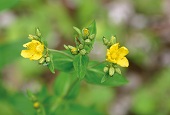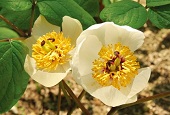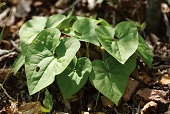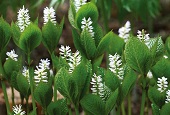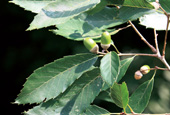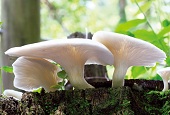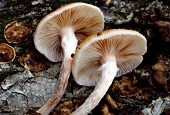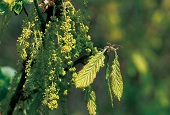View this article in another language
- 한국어
- English
- 日本語
- 中文
- العربية
- Español
- Français
- Deutsch
- Pусский
- Tiếng Việt
- Indonesian
Flora & Fauna of Korea #41
Korea.net publishes a series of articles, “Nature You Meet in the Mountains,” about the peninsula’s mushrooms, insects, trees and herbs & flowers.
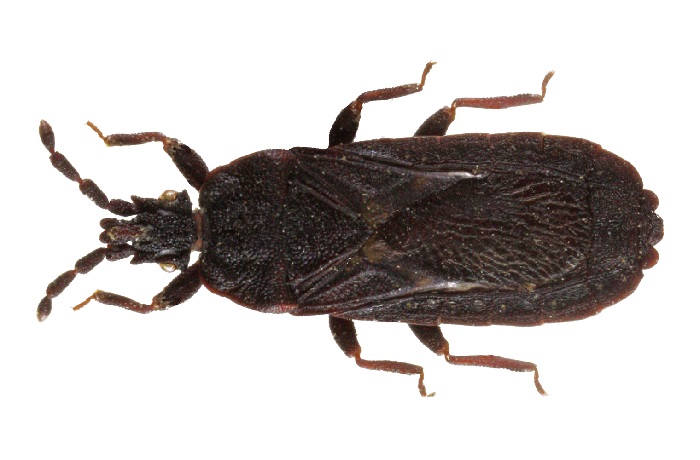
Insects
Name: 큰넓적노린재 Keunneopjeoknorinjae
Scientific name: Mezira scabrosa Scott
Distribution: Korea, Japan
This stinkbug is about 8 to 10 millimeters long. It's brown, with some parts having a hue of reddish brown. The head stands out toward the front, and the tip is divided outward. The antenna stand out, too. It has small compound eyes. There are little thorns around the eyes that point toward the back. The antenna are comprised of four sections, the first of which is the thickest. The middle part of the frontal thorax is a little shorter, and there are four ridges arranged along the upper part of the thorax.
The mesoscutum is dark, with the central part being yellowish brown. The hemelytra hangs at the tip of the abdomen. It has large membranes. The connecting parts in each section are yellowish brown. The bottom parts of the body are black brown. The legs are reddish brown and the "knuckles" on the thigh are relatively thick.
Ecology: It's mostly found under or in between the bark of old trees.
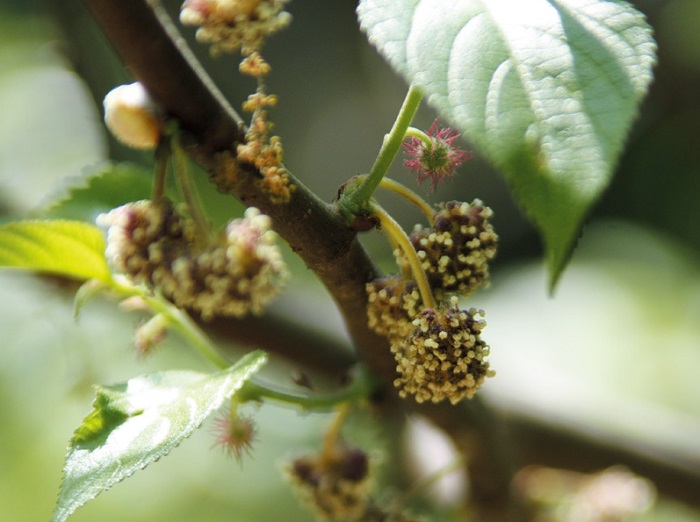
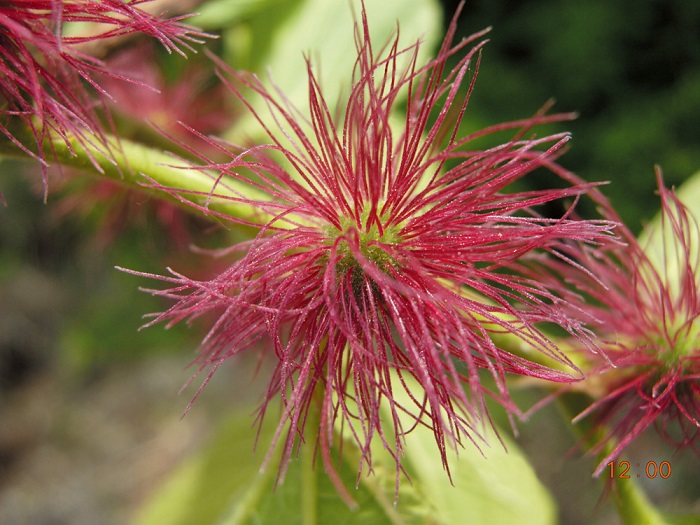
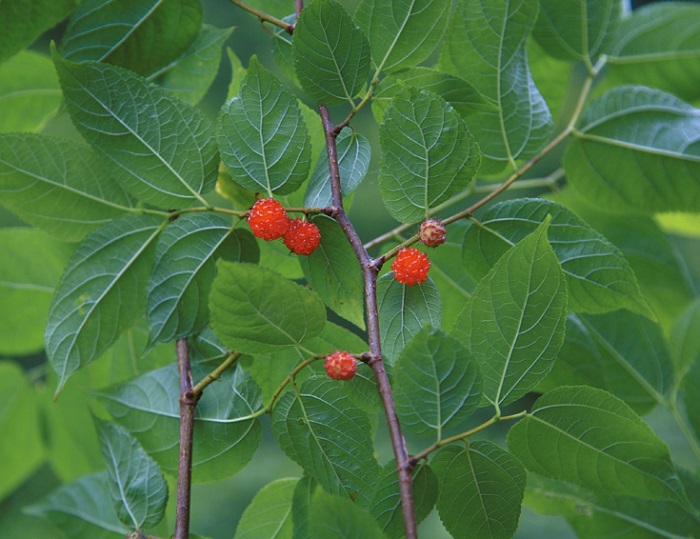
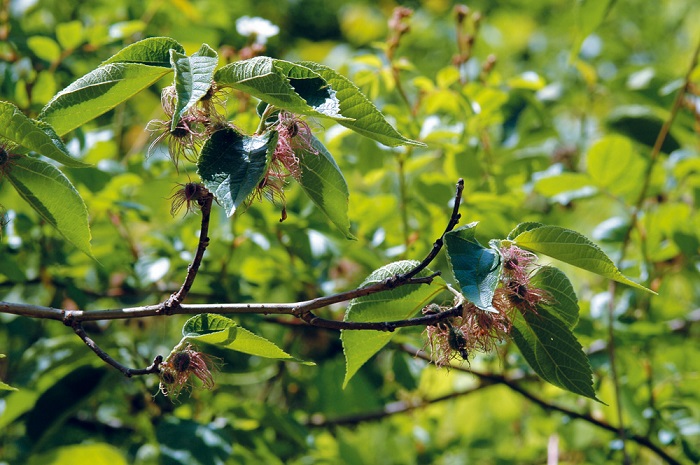
Trees
Name: 닥나무 Daknamu
Scientific name: Broussonetia kazinoki Siebold
Type: deciduous broadleaf shrub
Blooming season: May to June
Bearing season: August to October
Distribution: mountains in the central and southern parts of the peninsula
This mountain tree grows to a height of three meters. The bark is grayish brown. It's very tough. The leaves are alternating, ovate and reniform, with two to three lobations along the edges. This monoecious tree gives bloom to flowers, along with leaves. It bears fruits with a red exocarp. The edocarp is filled with granular bumps.
It has been used to create paper since Goryeo times (918-1392).
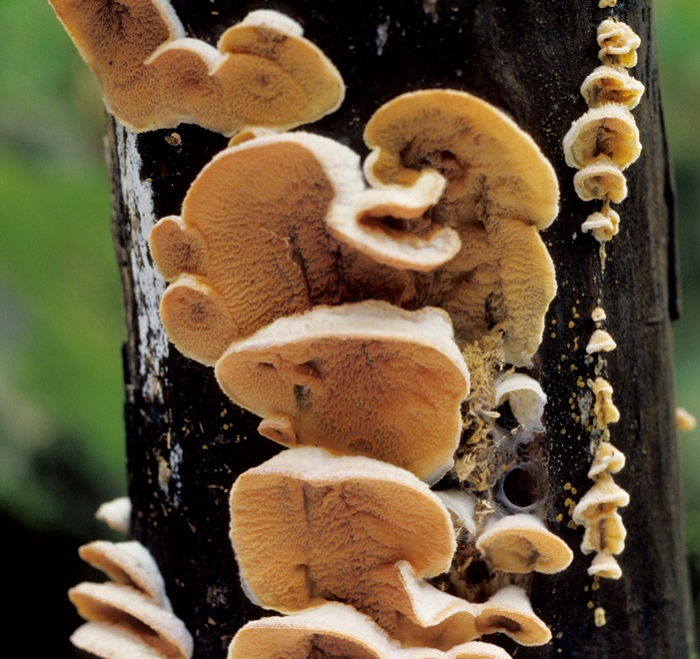
Mushrooms
Name: 아교버섯 Agyobeoseot
Scientific name: Merulius tremellosus Schrad.
Type: saprophile spore
Print: white
Inedible
This mushroom develops from the bark and stumps of dead trees, both broadleaf trees and trees with needles. It causes a white rot. The cap is non-resupinate, semi-circular and widely flat. It's as wide as two to eight centimeters and as thick as two to three millimeters. The surface is covered with white hairs. The pores on the gills are arranged randomly. It is yellow or light pink, has collagen elements, is translucent, dry and forms chondrin.
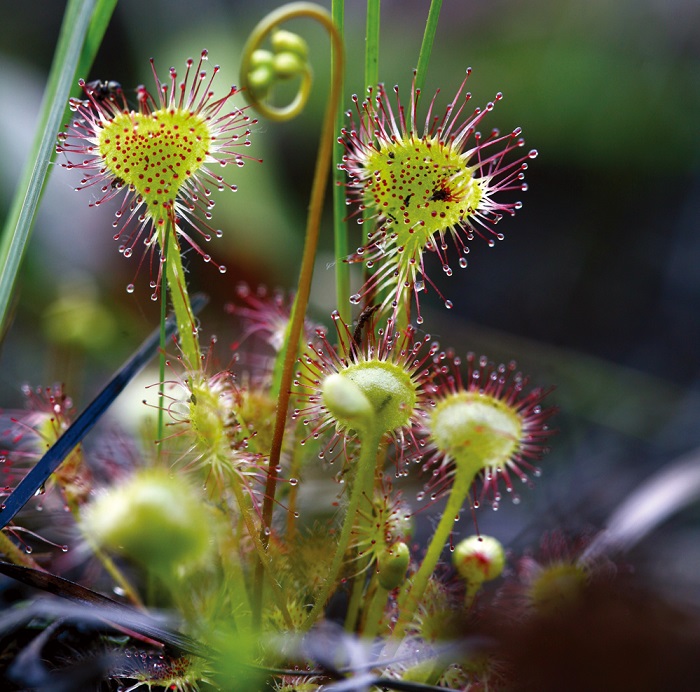
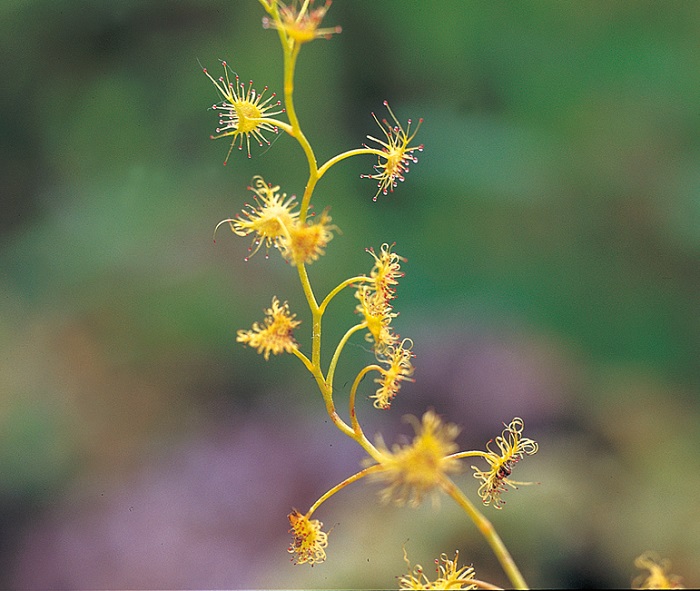
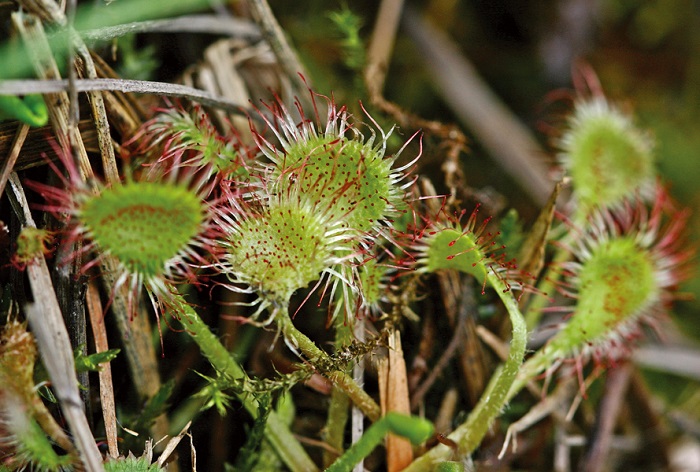
Herbs & Flowers
Name: 끈끈이주걱 Kkeunkkeunijugeok, Sticky Rice Paddle
Scientific name: Drosera rotundifolia L.
Blooming season: July
Distribution: mountains in sunny areas nationwide
This perennial grows in sunny areas. It grows 6 to 30 centimeters tall on average. Resembling a spoon, the plant grows in clusters from the root, and is covered with red hairs with a sticky liquid substance. The leaves shrink to catch insects when the bugs touch the liquid and get stuck to the leaves. The flowers bloom at the tip of the stems, surrounded by the leaves. It has five petals. It bears capsule fruit about four to five millimeters in diameter that can be separated into three parts.
*This series of article about Korea’s insects, trees, mushrooms and herbs & flowers has been made possible through the cooperation of the Korea National Arboretum.
Korea.net publishes a series of articles, “Nature You Meet in the Mountains,” about the peninsula’s mushrooms, insects, trees and herbs & flowers.

Insects
Name: 큰넓적노린재 Keunneopjeoknorinjae
Scientific name: Mezira scabrosa Scott
Distribution: Korea, Japan
This stinkbug is about 8 to 10 millimeters long. It's brown, with some parts having a hue of reddish brown. The head stands out toward the front, and the tip is divided outward. The antenna stand out, too. It has small compound eyes. There are little thorns around the eyes that point toward the back. The antenna are comprised of four sections, the first of which is the thickest. The middle part of the frontal thorax is a little shorter, and there are four ridges arranged along the upper part of the thorax.
The mesoscutum is dark, with the central part being yellowish brown. The hemelytra hangs at the tip of the abdomen. It has large membranes. The connecting parts in each section are yellowish brown. The bottom parts of the body are black brown. The legs are reddish brown and the "knuckles" on the thigh are relatively thick.
Ecology: It's mostly found under or in between the bark of old trees.




Trees
Name: 닥나무 Daknamu
Scientific name: Broussonetia kazinoki Siebold
Type: deciduous broadleaf shrub
Blooming season: May to June
Bearing season: August to October
Distribution: mountains in the central and southern parts of the peninsula
This mountain tree grows to a height of three meters. The bark is grayish brown. It's very tough. The leaves are alternating, ovate and reniform, with two to three lobations along the edges. This monoecious tree gives bloom to flowers, along with leaves. It bears fruits with a red exocarp. The edocarp is filled with granular bumps.
It has been used to create paper since Goryeo times (918-1392).

Mushrooms
Name: 아교버섯 Agyobeoseot
Scientific name: Merulius tremellosus Schrad.
Type: saprophile spore
Print: white
Inedible
This mushroom develops from the bark and stumps of dead trees, both broadleaf trees and trees with needles. It causes a white rot. The cap is non-resupinate, semi-circular and widely flat. It's as wide as two to eight centimeters and as thick as two to three millimeters. The surface is covered with white hairs. The pores on the gills are arranged randomly. It is yellow or light pink, has collagen elements, is translucent, dry and forms chondrin.



Herbs & Flowers
Name: 끈끈이주걱 Kkeunkkeunijugeok, Sticky Rice Paddle
Scientific name: Drosera rotundifolia L.
Blooming season: July
Distribution: mountains in sunny areas nationwide
This perennial grows in sunny areas. It grows 6 to 30 centimeters tall on average. Resembling a spoon, the plant grows in clusters from the root, and is covered with red hairs with a sticky liquid substance. The leaves shrink to catch insects when the bugs touch the liquid and get stuck to the leaves. The flowers bloom at the tip of the stems, surrounded by the leaves. It has five petals. It bears capsule fruit about four to five millimeters in diameter that can be separated into three parts.
*This series of article about Korea’s insects, trees, mushrooms and herbs & flowers has been made possible through the cooperation of the Korea National Arboretum.
